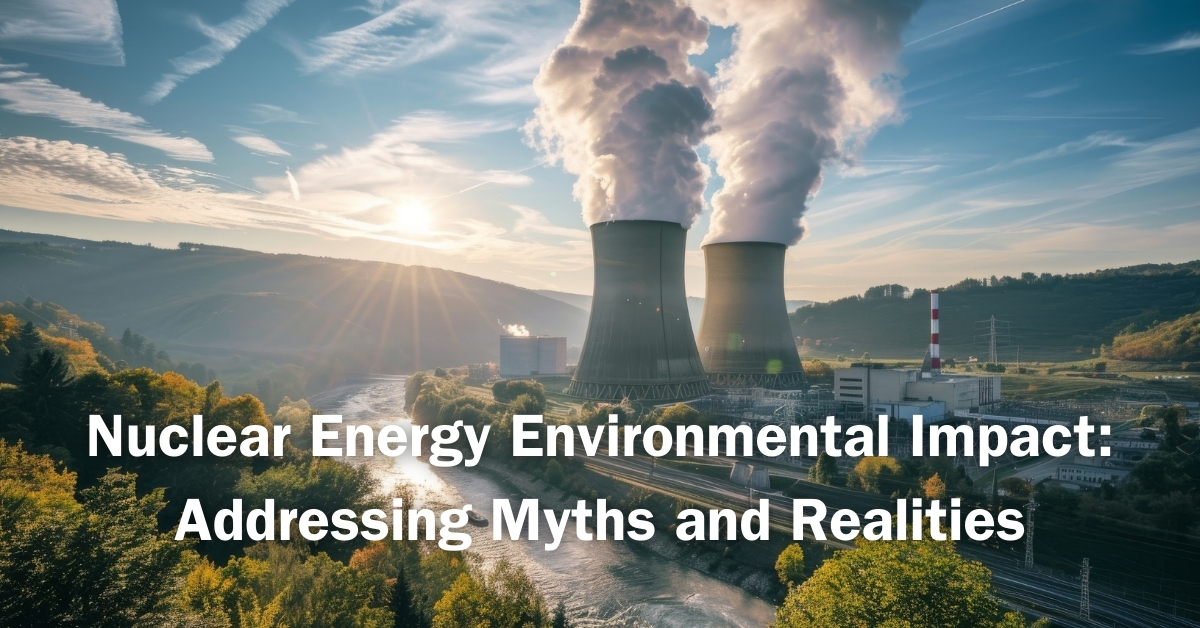Nuclear energy, often likened to a double-edged sword, holds vast potential while simultaneously bearing significant complexities in its environmental impact. It stands as both a beacon of hope in mitigating climate change and a testament to the challenges of managing technological advancement. This exploration delves into the multifaceted environmental implications of nuclear energy, shedding light on the interplay between its benefits and drawbacks.
At its core, nuclear energy is derived from the fission process, where heavy atomic nuclei are split to release copious amounts of energy. This energy production method emits minimal greenhouse gases during operation, positioning it as a low-carbon alternative to fossil fuels. The initial allure of nuclear energy rests in its capability to generate large-scale electricity without the concomitant emissions that plague traditional coal- or gas-fired power plants. This characteristic alone has established nuclear energy as an invaluable ally in the pursuit of mitigating climate change and promoting sustainability.
However, the tale of nuclear energy does not end with its low emissions. One must venture into the ecological complexities surrounding its operational lifecycle. From uranium mining through waste disposal, each stage presents unique environmental challenges that warrant rigorous examination and understanding. Uranium extraction, the critical precursor to energy generation, is notoriously invasive, leading to land degradation, water contamination, and habitat destruction. The extraction process often involves open-pit mining or in-situ leaching, both of which can irrevocably alter landscapes and ecosystems, impacting biodiversity and local communities.
Following the procurement of uranium, the next phase involves the enrichment and fabrication of nuclear fuel. These processes require considerable amounts of energy and resources, creating a ripple effect on energy consumption and associated emissions. Yet, the most contentious element of nuclear energy lies in the management of radioactive waste. This waste, a byproduct of the fission process, contains isotopes that remain hazardous for millennia. The management strategies for nuclear waste—ranging from temporary storage to deep geological repositories—evoke profound ethical and logistical dilemmas. The prolonged decay of radioactivity necessitates robust regulatory frameworks and technological innovations, underscoring the importance of accountably managing what is essentially humanity’s long-term legacy.
A stark contrast emerges when examining the potential catastrophic risks associated with nuclear energy production. The incidents at Chernobyl and Fukushima serve as pervasive reminders of the possible repercussions of nuclear accidents. While statistically rare, the potential for catastrophic failure introduces notions of environmental devastation that can linger for generations. In the aftermath of such events, ecosystems can become irrevocably altered; flora and fauna either perish or evolve in the shadow of radiation, demonstrating nature’s profound resilience yet simultaneous vulnerability.
Moreover, the thermal pollution generated by nuclear power plants disrupts local aquatic ecosystems. The discharge of heated water into surrounding rivers or oceans can imperil aquatic life by altering species compositions and disrupting breeding grounds. Such alterations can lead to a cascade of ecological consequences, affecting not only the immediate vicinity but also broader environmental networks through nutrient cycles and food webs.
Despite these challenges, it is critical to recognize the potential for nuclear energy to serve as a catalyst for innovation in environmental stewardship. The burgeoning development of advanced nuclear technologies, such as small modular reactors (SMRs) and thorium reactors, promises to enhance safety and mitigate waste issues while maintaining efficiency. These technologies offer the unique prospect of generating energy with reduced environmental footprints, minimizing land use and enhancing sustainability.
Furthermore, the potential implementation of closed fuel cycles and reprocessing technologies can significantly lessen waste generation. By recycling spent nuclear fuel, the volume of hazardous materials can be diminished, transforming waste into a resource rather than a burden. Such advancements encapsulate the imperative to marry technological innovation with environmental responsibility, fostering an arena where nuclear energy can contribute positively to ecological integrity.
As the world grapples with the pressing demands of climate change, the role of nuclear energy within the energy matrix becomes increasingly nuanced. The evaluation of its full environmental impact requires a holistic approach, encompassing not only its operational emissions but also the expansive ecosystem-wide ramifications of its lifecycle. It is an intricate tapestry of advantages and disadvantages, where hope resonates amid cautionary tales.
In conclusion, the environmental impact of nuclear energy embodies a crucial dichotomy. It is both a source of immense promise and a subject of significant concern—a reflection of humanity’s relentless pursuit of progress. The future trajectory of nuclear energy will depend on a collective commitment to addressing its challenges while harnessing its potential. As society stands at this crossroad, it bears the weighty responsibility to cultivate a constructed narrative of nuclear energy that prioritizes ecological balance and forward-thinking solutions, thereby ensuring that this powerful tool remains a bastion of sustainable energy production in the epochs to come.










